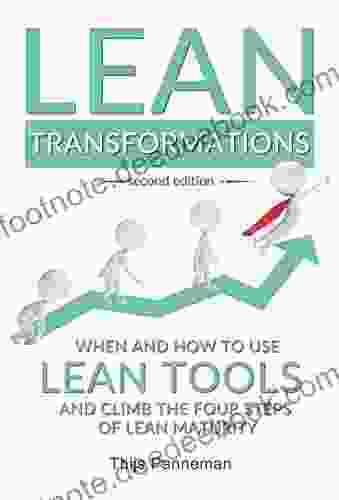Taking on Monopoly Power: A Historical Perspective from the Gilded Age to the Digital Age

The concentration of economic power in the hands of a few corporations has been a persistent concern throughout American history. In the late 19th century, the Gilded Age witnessed a wave of industrial consolidation that gave rise to powerful monopolies and trusts that dominated key industries. Today, in the Digital Age, a new wave of technology giants has emerged, raising similar concerns about competition and economic inequality. This article explores the historical evolution of monopoly power, examining the challenges and strategies used to combat it from the Gilded Age to the present day.
The Gilded Age: Rise of the Trusts
The Gilded Age (1870-1900) was a period of rapid economic growth and industrialization in the United States. However, it was also marked by rampant inequality and the rise of corporate monopolies. Companies such as Standard Oil, Carnegie Steel, and American Tobacco gained control of vast portions of their respective industries through aggressive tactics like mergers, acquisitions, and price fixing.
4.6 out of 5
| Language | : | English |
| File size | : | 85947 KB |
| Text-to-Speech | : | Enabled |
| Screen Reader | : | Supported |
| Enhanced typesetting | : | Enabled |
| Word Wise | : | Enabled |
| Print length | : | 797 pages |
| X-Ray | : | Enabled |
| Hardcover | : | 224 pages |
| Item Weight | : | 12.8 ounces |
| Dimensions | : | 6.14 x 0.51 x 9.21 inches |
| Paperback | : | 224 pages |
The Sherman Antitrust Act of 1890
Public outcry over the unchecked power of trusts led to the passage of the first major antitrust law in the United States, the Sherman Antitrust Act of 1890. The law outlawed "every contract, combination, or conspiracy in restraint of trade or commerce." However, the Sherman Act proved difficult to enforce, and monopolies continued to flourish.
The Progressive Era: Strengthening Antitrust
During the Progressive Era (1900-1917),a new wave of antitrust legislation emerged. The Clayton Act of 1914 strengthened the Sherman Act by prohibiting specific anti-competitive practices, such as price discrimination and tying agreements. Additionally, the Federal Trade Commission was established to investigate and prosecute unfair business practices.
The New Deal: Regulation and Competition
The Great Depression of the 1930s exposed the weaknesses of the existing antitrust system. The New Deal era saw the enactment of a number of regulations aimed at preventing monopolies and fostering competition. Laws like the Public Utility Holding Company Act (1935) and the Wheeler-Lea Act (1938) gave government agencies the power to regulate utilities and advertising practices.
The Post-War Era: Merger Boom and Antitrust Enforcement
The post-World War II era witnessed a wave of corporate mergers and acquisitions. Antitrust agencies became more active in challenging these mergers, and several large companies, including AT&T and IBM, were broken up. However, the merger boom continued, and by the 1980s, a new wave of concentration was underway.
The Digital Age: Technological Giants and Market Dominance
The advent of the internet and the rise of digital technologies have created a new context for antitrust concerns. Tech giants such as Google, Amazon, and Meta have amassed vast troves of data and control over key platforms, raising questions about their market power and the potential for anti-competitive behavior.
Modern Antitrust Challenges
The Digital Age has presented new challenges for antitrust enforcement. Traditional antitrust laws, designed to address physical markets, may not be sufficient to address the complex ecosystems and data-driven practices of digital platforms. Additionally, globalization has made it more difficult to enforce antitrust laws, as companies can easily shift their operations across borders.
Strategies for Combating Monopoly Power
Despite these challenges, a number of strategies have been proposed to combat monopoly power in the Digital Age. These include:
- Enforcing Existing Antitrust Laws: Strengthening antitrust agencies and ensuring they have the resources to investigate and prosecute anti-competitive behavior.
- Modernizing Antitrust Laws: Updating antitrust laws to address the unique challenges posed by digital platforms, such as data ownership and platform dominance.
- Promoting Competition: Encouraging new entrants into markets and supporting small businesses and startups.
- Structural Separation: Breaking up large companies into smaller, more competitive units.
- Regulation: Establishing government regulations to prevent abuses of market power and protect consumers.
The fight against monopoly power has been a constant struggle throughout American history. From the Gilded Age to the Digital Age, different strategies have been employed to address the challenges posed by corporate concentration. While the battle is far from over, the historical perspective provides valuable lessons for policymakers and advocates seeking to promote competition and protect the public interest in the modern economy. By carefully balancing the need for innovation and economic growth with the dangers of unchecked market power, we can strive to create a more equitable and dynamic economy for future generations.
4.6 out of 5
| Language | : | English |
| File size | : | 85947 KB |
| Text-to-Speech | : | Enabled |
| Screen Reader | : | Supported |
| Enhanced typesetting | : | Enabled |
| Word Wise | : | Enabled |
| Print length | : | 797 pages |
| X-Ray | : | Enabled |
| Hardcover | : | 224 pages |
| Item Weight | : | 12.8 ounces |
| Dimensions | : | 6.14 x 0.51 x 9.21 inches |
| Paperback | : | 224 pages |
Do you want to contribute by writing guest posts on this blog?
Please contact us and send us a resume of previous articles that you have written.
 Page
Page Text
Text Paperback
Paperback E-book
E-book Magazine
Magazine Paragraph
Paragraph Sentence
Sentence Bookmark
Bookmark Shelf
Shelf Glossary
Glossary Preface
Preface Synopsis
Synopsis Footnote
Footnote Manuscript
Manuscript Scroll
Scroll Codex
Codex Tome
Tome Bestseller
Bestseller Library card
Library card Biography
Biography Reference
Reference Encyclopedia
Encyclopedia Thesaurus
Thesaurus Character
Character Librarian
Librarian Card Catalog
Card Catalog Stacks
Stacks Archives
Archives Periodicals
Periodicals Study
Study Research
Research Lending
Lending Reserve
Reserve Rare Books
Rare Books Interlibrary
Interlibrary Dissertation
Dissertation Storytelling
Storytelling Awards
Awards Theory
Theory Textbooks
Textbooks Graham Robson
Graham Robson Martyn Bond
Martyn Bond Neel Patel
Neel Patel Jan Thomas
Jan Thomas Virginia A Greiman
Virginia A Greiman J R Mathews
J R Mathews Francis Voisey
Francis Voisey J T Skye
J T Skye Jeffrey L Staley
Jeffrey L Staley Charlotte Mason
Charlotte Mason Spencer Wilson
Spencer Wilson Lyne Bansat Boudon
Lyne Bansat Boudon Theodor Leiber
Theodor Leiber Rose Castro Bran
Rose Castro Bran Mordecai Roshwald
Mordecai Roshwald Thomas Harris
Thomas Harris Tea Krulos
Tea Krulos Rodney Scott
Rodney Scott Rana Foroohar
Rana Foroohar Lisa Darcy
Lisa Darcy
Light bulbAdvertise smarter! Our strategic ad space ensures maximum exposure. Reserve your spot today!
 Ivan TurgenevFollow ·12.5k
Ivan TurgenevFollow ·12.5k Edmund HayesFollow ·11.3k
Edmund HayesFollow ·11.3k Neil ParkerFollow ·16.9k
Neil ParkerFollow ·16.9k Emmett MitchellFollow ·11.2k
Emmett MitchellFollow ·11.2k Adrien BlairFollow ·15.7k
Adrien BlairFollow ·15.7k Angelo WardFollow ·4.9k
Angelo WardFollow ·4.9k Chadwick PowellFollow ·17.6k
Chadwick PowellFollow ·17.6k Henry Wadsworth LongfellowFollow ·6.5k
Henry Wadsworth LongfellowFollow ·6.5k

 Allen Ginsberg
Allen GinsbergUnveiling the True Meaning of Enough: A Comprehensive...
: In the relentless pursuit of progress and...

 Clay Powell
Clay PowellHawker Hunter: The Jet Fighter that Shaped British...
Nestled in the halls of aviation...

 Alec Hayes
Alec HayesWhen and How to Use Lean Tools and Climb the Four Steps...
Lean is a management...

 Trevor Bell
Trevor BellVolume of Charlotte Mason Original Homeschooling: A...
Charlotte Mason's original...

 John Parker
John ParkerAscending Tristan da Cunha: A Comprehensive Guide to...
Prepare yourself for an extraordinary journey...
4.6 out of 5
| Language | : | English |
| File size | : | 85947 KB |
| Text-to-Speech | : | Enabled |
| Screen Reader | : | Supported |
| Enhanced typesetting | : | Enabled |
| Word Wise | : | Enabled |
| Print length | : | 797 pages |
| X-Ray | : | Enabled |
| Hardcover | : | 224 pages |
| Item Weight | : | 12.8 ounces |
| Dimensions | : | 6.14 x 0.51 x 9.21 inches |
| Paperback | : | 224 pages |














